Invited speakers
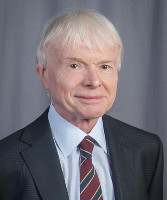 |
Thomas J.R. Hughes, University of Texas at Austin, USA |
| Isogeometric Analysis: Status and Trends |
 |
Carlotta Giannelli, University of Florence, Florence, Italy |
|
Adaptive IGA with smooth hierarchical splines: fundamentals for multipatch extensions
joint work with C. Bracco, M. Kapl, R. Vázquez
|
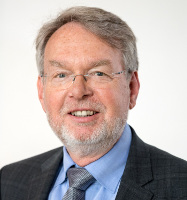 |
Ernst Rank, Teschnische Universität München, München, Germany |
| Immersed Analysis: Principles, Achievements, Challenges |
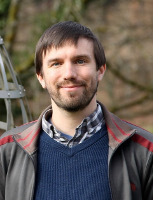 |
John A. Evans, University of Colorado Boulder, Boulder, USA |
Adaptive Level Set Topology Optimization with Hierarchical B-Splines
In this talk, I will discuss our recent work on developing an adaptive topology optimization framework based on three component technologies: (i) the level set method, (ii) immersed isogeometric analysis, and (iii) hierarchical B-splines. In our framework, the material layout of the domain is defined by one or more level set fields, each of which are defined using hierarchical B-splines. The response of the system is also described by a hierarchical B-spline discretization in conjunction with a generalized version of the extended finite element method. Our framework is general in that one may employ different hierarchical B-spline spaces to describe the level set fields and the system response. Our framework is adaptive in two ways. First, our framework allows for adaptivity of the hierarchical B-spline space describing the system response to better capture local solution features for a given design. Second, our framework allows for adaptivity of the hierarchical B-spline space describing the level set fields to adapt to emerging topological and geometric features as the topology optimization process continues. It should also be noted that since we use hierarchical B-splines to describe the level set fields as opposed to standard finite elements, our framework yields optimal designs which are smooth. I will give an overview of the details of our adaptive topology optimization framework and its properties, and I will provide several examples illustrating its utility in structural and heat conduction topology optimization. I will also highlight recent advances in numerical integration and linear system solution for immersed isogeometric analysis that result in significant efficiency gains over the state of the art.
|
 |
Benjamin Marussig, Graz University of Technology, Graz, Austria |
| Fast formation and assembly for trimmed domains |
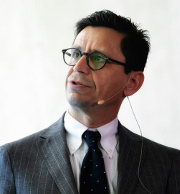 |
Lambros Rorris, R&D Crash and Safety, BETA CAE Systems AG |
| Introducing IGA to the automotive industry. Adapting current practices and workflows to the new paradigm |
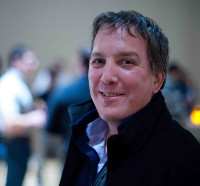 |
Victor Calo, Curtin University, Perth, Australia
Dr Victor Calo is a Professor of Applied Mathematics at Curtin University and holds the Professorial Chair in Computational Geoscience at Curtin University. Prof Calo is a highly cited researcher actively involved in disseminating knowledge: Victor has authored over 250 peer-reviewed publications, a book, and two patents. Prof Calo's research interests include adaptive finite element analysis of non-linear dynamics and high-performance computing driven by applications in geomechanics, fluid dynamics, flow in porous media, phase separation, fluid-structure interaction, and solid mechanics.
|
Time marching for IGA: higher-order implicit and explicit methods and fast solvers
Isogeometric analysis (IGA) is a highly accurate finite element discretization technique. IGA delivers high accuracy in space. In our experience, to exploit this spatial accuracy, we need comparable resolution in time. The generalized-$\alpha$ method provides second-order accuracy and unconditional stability for equations with first and second derivatives in time. These techniques allow the user to control the high-frequency numerical dissipation by producing an algorithm that delivers an optimal combination of high-frequency and low-frequency dissipation. The approach provides accurate approximations in low- and high-frequency regions and has been successfully used in many engineering applications. Despite these features, the generalized-$\alpha$ method was limited to second-order accuracy in time while the higher-order Runge-Kutta and other multistep schemes (e.g., Adams-Moulton, and backward differentiation formulae (BDFs)) lack explicit control over the numerical dissipation of the high frequencies. The stability region of these higher-order multistep methods shrinks as their order increases. Therefore, unconditional stability is not possible for orders higher than two. While Runge-Kutta methods have better stability regions and deliver A-stability with higher-order accuracy, they are not self-starting and require another scheme to retrieve solutions at initial time steps.
Recently, we proposed and analyzed a new class of extensions of the generalized-$\alpha$ methods for partial differential equations (PDEs) with first- and second-order derivatives in time. These methods deliver flexible arbitrary high-order accuracy while keeping all of the appealing features of these robust and effective methods. Additionally, we developed a splitting that reduces the algebraic solver's computational cost while maintaining the approximation's accuracy. Implicit time marching schemes for IGA discretizations solve a matrix system at each step; this step is the solver's highest cost. We substitute the original discretization with an approximating splitting technique to significantly reduce the computation cost of the solution. We introduce variational splittings for parabolic and hyperbolic problems using tensor-product grids to formulate the variational formulation for multi-dimensional problems. These methods adapt operator splitting ideas to tensor-product spatial discretizations for classical finite elements and isogeometric analysis. We write the $d$-dimensional formulation as a product of $d$ 1D formulations in each dimension plus appropriate error terms. We refer to these formulations as variationally separable. Exploiting the variational separability, we present a splitting technique to solve the linear systems with a linear computational cost. With sufficient regularity, the approximate solution converges to the exact solution with optimal rates in space and time while reducing the computational cost significantly. In this talk, we will describe these techniques and demonstrate their accuracy, robustness, and performance.
|
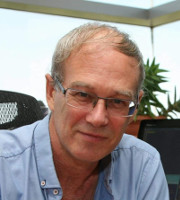 |
Gershon Elber, Technion, Haïfa, Israel |
Volumetric Representations: Design, Analysis, Optimization, and Fabrication of Porous/Heterogeneous Artifacts
The needs of modern (additive) manufacturing (AM) technologies can no longer be satisfied by boundary representations (B-reps). AM requires the representation and manipulation of interior fields and materials. Further, while the need for a tight coupling between design and analysis has been recognized as crucial almost since geometric modelling (GM) has been conceived, contemporary GM systems only offer a loose link between the two, if at all.
For about half a century, the (trimmed) Non Uniform Rational B-spline (NURBs) representation has been the B-rep of choice for virtually all the GM industry. Fundamentally, B-rep GM has evolved little during this period. In this talk, we seek to examine an extended, B-spline
based, volumetric representation (V-rep) that successfully confronts the existing and anticipated design, analysis, and manufacturing foreseen challenges. We extend all fundamental B-rep GM operations, such as primitive and surface constructors and Boolean operations, to
trimmed trivariate V-reps. This enables the much-needed tight link between the designed geometry and (Isogeometric) analysis on one hand and the full support of (additive) manufacturing of porous, heterogeneous and anisotropic artifacts, on the other.
Examples and applications of V-rep GM, that span design, analysis and optimization, and AM, of lattice- and micro-structure synthesis as well as heterogeneity, will also be demonstrated.
Work in collaboration with many others, including Ben Ezair, Fady Massarwi, Boris van Sosin, Jinesh Machchhar, Q Youn Hong, Sumita Dahiya, Annalisa Buffa, Giancarlo Sangalli, Pablo Antolin, Massimiliano Martinelli, Bob Haimes and Stefanie Elgeti.
|
 |
Yuri Bazilevs, Brown University, Providence, USA
Yuri Bazilevs is the E. Paul Sorensen Professor of the Mechanics of Solids and Structures in the School of Engineering at Brown University. He was previously a Professor and Vice Chair in the Structural Engineering Department at the University of California, San Diego. Yuri is the original developer of Isogeometric Analysis (IGA), a new computational methodology that aims to integrate engineering design (CAD) and simulation (FEM). For his research contributions Yuri received a number of awards and honors, including the 2018 Walter E. Huber Research Prize from the ASCE, the 2020 Gustus L. Larson Award from the ASME, and the inaugural 2021 Centennial Mid-Career Award from the Materials Division of the ASME. He is included in the lists of Highly Cited Researchers, both in the Engineering (2015-2018) and Computer Science (2014-2019) categories. Yuri currently serves as the Chairman of the Applied Mechanics Division of the ASME and the President of the US Association for Computational Mechanics (USACM).
|
Breakthroughs in The Modeling of Shell Structures: IGA and Beyond
The development of Isogeometric Analysis (IGA), with the aim of integrating Computer-Aided Design (CAD) and Computer-Aided Engineering (CAE) by means of employing mainly variational methods and smooth Spline discretizations to solve the governing partial differential equations of a physical system of interest, has led to a renaissance in the computational methods and technology development for thin shell structures. Thin shells here are understood as structures that have a much lower thickness compared to the local radius of curvature. In particular, a smooth Spline representation of surfaces, which is native to CAD software, has led to the development of Kirchhoff—Love shell theories where the shell kinematics is written purely in terms of the midsurface position or velocity degrees of freedom (DoFs). Transverse shear locking issues are circumvented and so is the use of rotational DoFs, making the resulting models more accurate and efficient, and, as a consequence, practical. This presentation will focus on the development in IGA-shell modeling, starting from the early results and transitioning to (very) recent developments and practical applications. The presentation will conclude by addressing a long-standing challenge of modeling fracture, with large deformation and disintegration, in shell structures using the framework of bond-associated Peridynamics with correspondence modeling.
|
|




